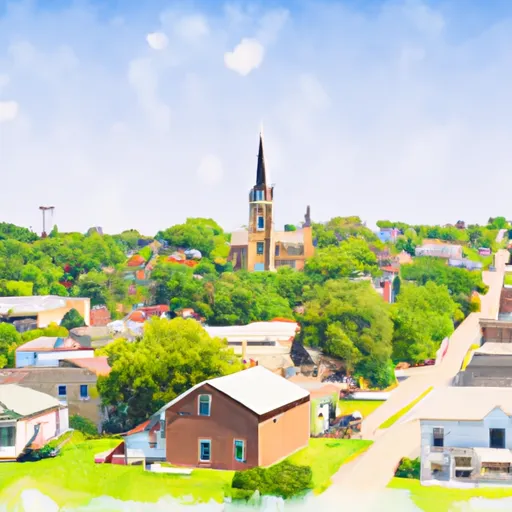°F
°F
mph
Windspeed
%
Humidity











Unionville, Iowa is a picturesque town located in Appanoose County. The climate in Unionville is classified as humid continental, experiencing four distinct seasons. Summers are typically warm and humid, with average temperatures ranging from 70°F to 85°F. Winters are cold, with temperatures dropping to around 20°F, and snowfall is common.
Hydrologically, Unionville is surrounded by several small creeks and streams, including the Chariton River, which flows nearby. These water bodies provide opportunities for fishing and boating. The region's hydrology is also essential for maintaining the local ecosystem and supporting the diverse flora and fauna.
Outdoor recreation enthusiasts will find ample opportunities in Unionville. The Chariton River offers excellent fishing opportunities, with anglers commonly catching catfish, bass, and perch. The picturesque landscapes surrounding Unionville are perfect for hiking, camping, and bird-watching. Be sure to explore the nearby Honey Creek State Park, which offers trails for hiking and biking, as well as camping facilities. Overall, Unionville, Iowa, is a charming town that embraces its natural surroundings and offers a variety of outdoor recreational activities for residents and visitors alike.
Weather Forecast
Unionville receives approximately 964mm of rain per year, with humidity levels near 83% and air temperatures averaging around 11°C. Unionville has a plant hardyness factor of 5, meaning plants and agriculture in this region thrive during a short period during spring and early summer. Most plants will die off during the colder winter months.
Regional Streamflow Levels
4
Cubic Feet Per Second
62
Cubic Feet Per Second
5
Cubic Feet Per Second
63
Cubic Feet Per Second
Nearby Camping
| Camping Area | Reservations | Toilets | Showers |
|---|---|---|---|
| Buck Creek - Bull Shoals Lake | |||
| Oakland - Bull Shoals Lake | |||
| Ozark Isle - Bull Shoals Lake | |||
| Lakeview - Bull Shoals Lake | |||
| Theodosia | |||
| Point Return City Park |



